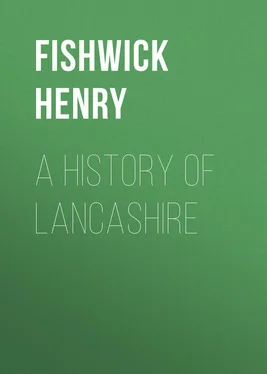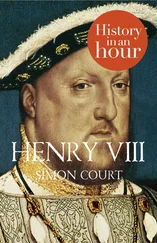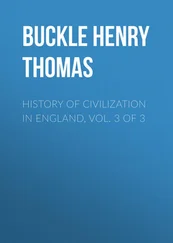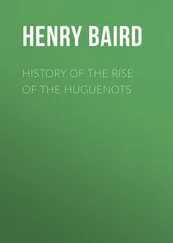Henry Fishwick - A History of Lancashire
Здесь есть возможность читать онлайн «Henry Fishwick - A History of Lancashire» — ознакомительный отрывок электронной книги совершенно бесплатно, а после прочтения отрывка купить полную версию. В некоторых случаях можно слушать аудио, скачать через торрент в формате fb2 и присутствует краткое содержание. Жанр: foreign_antique, foreign_prose, на английском языке. Описание произведения, (предисловие) а так же отзывы посетителей доступны на портале библиотеки ЛибКат.
- Название:A History of Lancashire
- Автор:
- Жанр:
- Год:неизвестен
- ISBN:нет данных
- Рейтинг книги:4 / 5. Голосов: 1
-
Избранное:Добавить в избранное
- Отзывы:
-
Ваша оценка:
- 80
- 1
- 2
- 3
- 4
- 5
A History of Lancashire: краткое содержание, описание и аннотация
Предлагаем к чтению аннотацию, описание, краткое содержание или предисловие (зависит от того, что написал сам автор книги «A History of Lancashire»). Если вы не нашли необходимую информацию о книге — напишите в комментариях, мы постараемся отыскать её.
A History of Lancashire — читать онлайн ознакомительный отрывок
Ниже представлен текст книги, разбитый по страницам. Система сохранения места последней прочитанной страницы, позволяет с удобством читать онлайн бесплатно книгу «A History of Lancashire», без необходимости каждый раз заново искать на чём Вы остановились. Поставьте закладку, и сможете в любой момент перейти на страницу, на которой закончили чтение.
Интервал:
Закладка:
In the time of Edward the Confessor (A.D. 1041–1066) most of the land in Rochdale was held of the King by Gamel the Thane; part of this land was free from all duties except danegeld. 46 46 Originally a tax paid to the Danes, but afterwards appropriated to the King. It was always a very unpopular tax.
There can be little doubt but that a Saxon Thane of this order had both his castle and its accompanying church. As to the existence of the former, it is placed beyond dispute by the name Castleton, which occurs in many very early deeds, and by the fact that in a charter, without date (but early in the thirteenth century), reference is made to “the land lying between” a field “and the ditch of the castle” ( fossatum castelli ), and the right of way is reserved for “ingoing and exit to the place of the castle” ( locus castelli ), and the right of footway to lands “in Castleton in the north part of Smythecumbesrode and an assartum called Sethe.” The boundaries detailed in the charter show that this castle, probably then in ruins, stood on the elevated ground still known as Castle Hill. 47 47 Plan of this in Fishwick’s “History of Rochdale,” p. 66.
There is a local tradition that at Bury, on the site called Castle Croft, once stood a Saxon castle; but there is no evidence to support this, and from the character of a portion of the foundations discovered in 1865, it seems more probable that the building which gave its name to the place was of much more recent date.
Winwick, near Warrington, has also its traditional Saxon castle, and also lays claim to having within its parish the site of the battle–field where Oswald, King of Northumbria, fell on August 5, A.D. 642. Bede 48 48 “Eccles. Hist.,” lib. iii., cap. 8.
records that the Christian King was slain in a great battle against the pagan ruler over the Mercians at a place called Maserfield, and adds that such was his faith in God that ever since his death infirm men and cattle are healed by visiting the spot where he was killed; some, taking the dust from the soil and putting it in water, were able to heal their sick friends; by this means the earth had been by degrees carried away, so that a hole remained as deep as the height of a man.
This Maserfield, or Maserfeld, was by Camden and others supposed to be near Oswestry, in Shropshire, but there are many good reasons for assuming that the engagement took place in Makerfield, near Winwick; the very ancient parish church is dedicated to St. Oswald, and half a mile to the north of it is St. Oswald’s Well, which is at the present day in a deep ditch, and until within quite recent times was in the charge of a paid custodian, whose duty it was to keep the water from contamination; 49 49 Baines’ “Hist. of Lanc.,” ii. 205, 2nd edit.
an ancient inscription on the wall of the south side of the church also appears to confirm the opinion.
In Aldingham Moat Hill (in Furness) we have an example of the moated mound or “burh” of a Saxon lord, which probably dates from the tenth century. 50 50 The following account of it is compiled from an article in Archæologia , vol. liii., part iii., by H. Swainson Cowper, Esq., F.S.A.
The earthwork consists of three divisions. The rectangular camp, is surrounded by a ditch nearly 40 feet wide, and 4 or 5 feet deep, the space thus enclosed being about 100 feet square. About 100 yards south of this there is a straight piece of ditch which runs almost at right angles to the sea–cliff for some 250 feet. South again of this ditch, but separated from it by about 40 yards, stands the moated “burh” itself, on the very edge of the cliff; the ditch and part of the mound have been washed away by the sea. The “burh” is about 30 feet high, and 96 feet above the sea–level. The ditch is about 10 feet deep, and between 15 and 20 feet broad at the bottom. This was the fortified home of the Anglo–Saxon clan settled in this place. The rectangular enclosure may have been the meeting–place of the folk–moot of the settlement. Pennington Castle Hill is a somewhat similar mound, but some of the characteristics of a “burh” are wanting; nevertheless, it was doubtless the fortified ton of the Pennings. Near to it is a place called Ellabarrow, which takes its name from a large tumulus 400 feet in circumference, known as Coninger or Coninsher.
The remains which from time to time have been discovered, and which can with certainty be classed as Danish or Anglo–Saxon, are not nearly so numerous as one would have expected. Saxon stone crosses (or portions of them) have been found at Bolton, Whalley, Burnley, Halton, Heysham, Lancaster, and Winwick, and the ornamentation of several of them is beautiful and interesting. The so called “hog–backed” stone in Heysham churchyard has given rise to much controversy, and is undoubtedly of very great antiquity. 51 51 See Lanc. and Ches. Arch. Soc. , v. 1 et seq.
Saxon tumuli have been opened at Langho, Winwick, and some few other places, and coins belonging to this period have occasionally been exhumed; notably at Cuerdale, where nearly 2,000 coins were found which were believed to have been struck by one of the Danish rulers of Northumbria, and large numbers of very similar coins have been dug up at Harkirke, in the parish of Sefton. Some of these coins were of King Alfred’s time, others were of Guthred, or Gulfrith (son of Ivan), who was King of Northumbria A.D. 883 to 894, who was supposed to have on embracing Christianity taken the name of Cnvt , which is engraved on the coins. 52 52 See Lanc. and Ches. Arch. Soc. , v. 227.
It is believed that at Billington, near Whalley, in A.D. 798, King Ethelred met the conspirator Wada, and defeated him in a battle in which on both sides great numbers were slain. 53 53 Saxon Chronicle and the Chronicle of Simon of Durham.
Near to this place is a large tumulus known as the “Lowe,” which has never been properly explored; but at Brockhole Eses (which is quite near to Billington) a tumulus was found to contain human bones and iron spear–heads.
At Claughton, in the parish of Garstang, a tumulus of this period was opened in 1822, and found to contain, in addition to charred human bones, large convex brooches of white metal, beads of coloured paste, iron and stone axes, spear–heads and a sword; 54 54 Arch. Journal , vi. 74; and “History of Garstang,” Chetham Soc. , civ. 5.
remains very similar in character to these were also dug up at Crossmoor, in Inskip, in 1889. 55 55 Fishwick’s “History of St. Michael’s–on–Wyre,” Chetham Soc. , xxv. (new series), p. 2.
In the time which immediately preceded the coming of the Norman Conqueror, Lancashire must have been very sparsely populated; in every part of it there were vast forests, and great stretches of moss and fern; agriculture was everywhere neglected; towns, in the modern sense, there were none; but here and there, clustering as if for protection round some Saxon Thane’s castle or fortified dwelling–place, were groups of wooden houses and rude huts, and scattered sparsely over the county were the clearings ( assarts or rods ) and the tons of the primitive settlers, with, in some districts, a wooden building doing duty as a church. Except where the old Roman roads were still in use, the means of passage from one place to another was difficult and dangerous; the people were of many tribes and nations – remnants of ancient British families, Angles, Saxons, Danes, Scandinavians, and even Normans contributed to the general stock – and as there were many tribes, so were there various religions, although Christianity had now become the general accepted faith. But for all this, much had been accomplished by time and experience to prepare the mind of the people to accept the tenet that union is strength, and that only by an undivided kingdom could come peace, wealth, and prosperity.
Читать дальшеИнтервал:
Закладка:
Похожие книги на «A History of Lancashire»
Представляем Вашему вниманию похожие книги на «A History of Lancashire» списком для выбора. Мы отобрали схожую по названию и смыслу литературу в надежде предоставить читателям больше вариантов отыскать новые, интересные, ещё непрочитанные произведения.
Обсуждение, отзывы о книге «A History of Lancashire» и просто собственные мнения читателей. Оставьте ваши комментарии, напишите, что Вы думаете о произведении, его смысле или главных героях. Укажите что конкретно понравилось, а что нет, и почему Вы так считаете.












